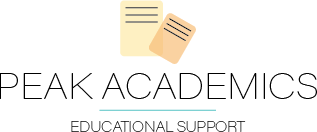When a child says they “hate” reading, parents and teachers naturally push against that frustration. Although the fight is well-intentioned, forcing them into it via conflict can unfortunately worsen that resistance. To make matters worse, parents facing this challenge are far from alone, as the percentage of children who read for fun continues to drop and is now at its lowest since the 80s.
Rebuilding a positive attitude toward reading for a child with negative associations is both challenging and essential. It can also be particularly tricky, as encouraging reading differs from other forms of behavioral change. For example, incentivizing reading can have the opposite of its desired impact. Despite an initial increase in frequency, it is associated with a reduction over time and even decreased reading comprehension.
Reading improves cognitive development, critical thinking, emotional well-being, and academic success, so its loss is deeply felt in the classroom and at home. Instead of falling into the power struggle trap, here are some effective but subtle strategies that can re-introduce a love of reading without pressure or bribery.
ADDRESS THE ROOTS OF RESISTANCE
Firstly, what is it about reading that children seem to ‘hate?’ Knowing and responding effectively to your child’s unique reasons can make a world of difference. Common answers often include boredom, difficulty understanding, pressure to read what they don’t enjoy, lack of interest, struggles with focus and attention, and a general sense of frustration rather than enjoyment. Once the ‘why’ is clearer, so are the next steps.
For example, if a child feels that reading is too difficult, they may have had to work with content too far above their reading level. Repeated experiences with this may have unintentionally ‘taught’ them that reading is ‘too difficult’ and inaccessible, so they have chosen to avoid it instead. A reading assessment to determine their current level can make it easier to identify material appropriate for their unique needs. Generally speaking, content should be at or just above the current level to promote skill growth; however, if the goal is to reverse the damage of negative emotions and limiting beliefs, it can help to start at or just below until they demonstrate a renewed sense of confidence and optimism.
If they struggle with focus or attention during reading, this could indicate a different learning style or executive functioning skills deficit. Understanding what these are can help inform the most accessible and supported ways for a child to engage with a text. For instance, some children do better with audiobooks (and don’t worry - audiobooks aren’t “cheating,” they produce nearly identical benefits to reading visually). On the other hand, children who struggle with executive functions and attention may prefer to own physical copies so they can annotate and engage more interactively with what they’re reading.
MAKE READING PART OF THE ENVIRONMENT
The more unobtrusive and natural reading feels, the better. Fortunately, there are some very easy ways to make this a natural extension of their everyday lives:
Make weekly trips to the library, giving them the freedom to browse independently
Visit multiple bookstores and choose a favorite (thrift stores often have robust book sections with books for $1-3)
Bring books for long lines, car trips, plane rides, and vacations
Keep books everywhere: in the car, around the house, and always within reach
Model reading for pleasure as often as possible
Create a dedicated reading space with favorite blankets, special lights, and extra pillows
Establish specific times, such as the drive home from school, the last hour before bed, or Saturday mornings (this should ideally apply to the whole family!)
Read together as a bonding experience - taking turns reading aloud or snuggling with separate books (here are some additional tips to also improve comprehension)
Encourage rereading of favorite books, which helps strengthen speed and accuracy while also building more confidence
WHAT COMES NEXT: GAINING MOMENTUM
Once the reasons have been thoughtfully addressed and reading has become a more positive experience, here are a few ways to foster even greater levels of engagement:
Make connections between things you’ve read and your child’s unique ideas, passions, and experiences
Explore genres to discover their favorites: nonfiction, fantasy, sci-fi, graphic novels, etc.
Find a series that captures their interest, which can promote a sense of comfort and familiarity, enthusiasm to read more, and opportunities to buy more as gifts
While at the bookstore, collaborate to find a few books to give as gifts for someone else (ie. a recipe book for Dad to use with the new grill, or a book themed around an upcoming holiday to share with a younger sibling)
In conclusion, by addressing the reasons behind a child’s resistance and cultivating an environment where reading feels like a natural extension of their day, parents and educators can help them rediscover the joy of books. It is critical to approach the journey with empathy, acknowledging that every child is unique and will require different strategies. While it can be challenging and require a great deal of patience, the ultimate goal is for our children to hopefully embrace reading as a lifelong passion.
Written by Brandi R.


